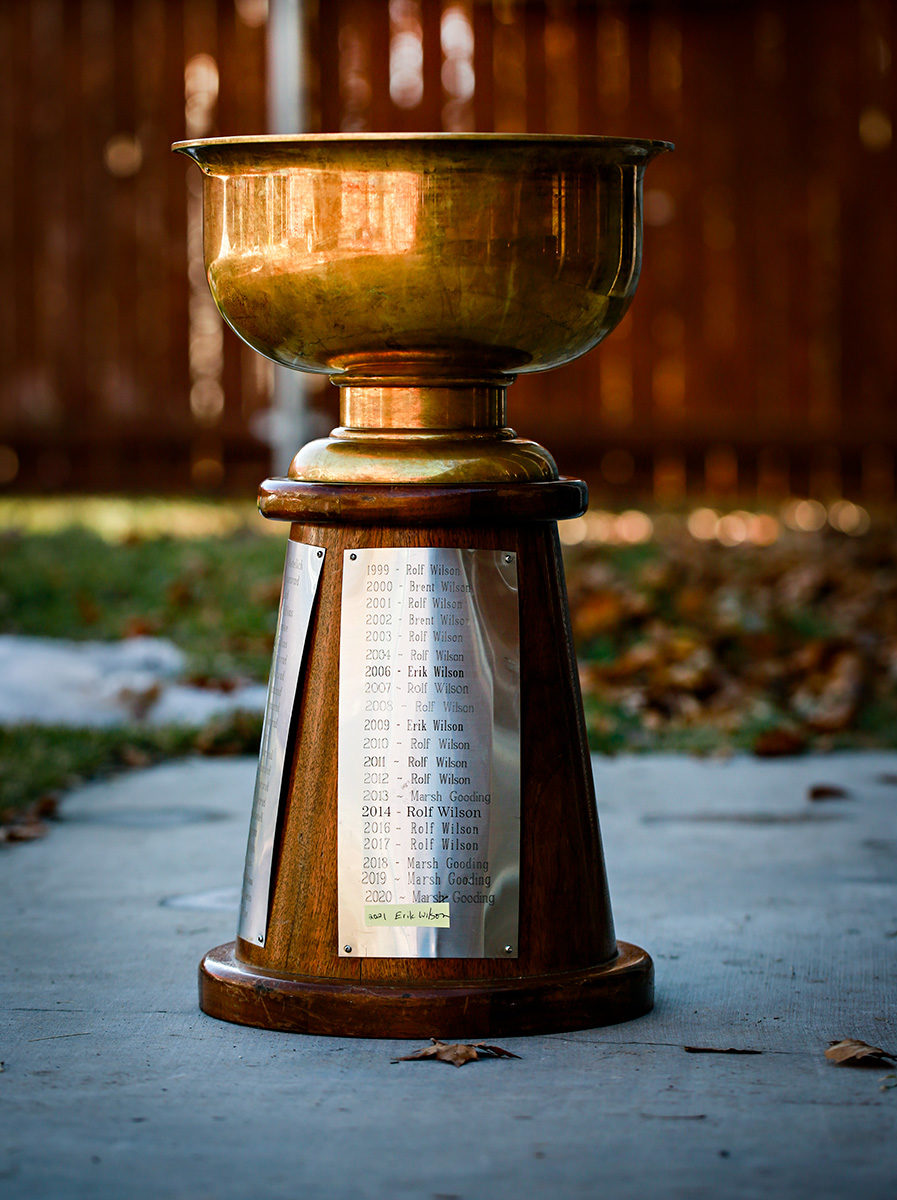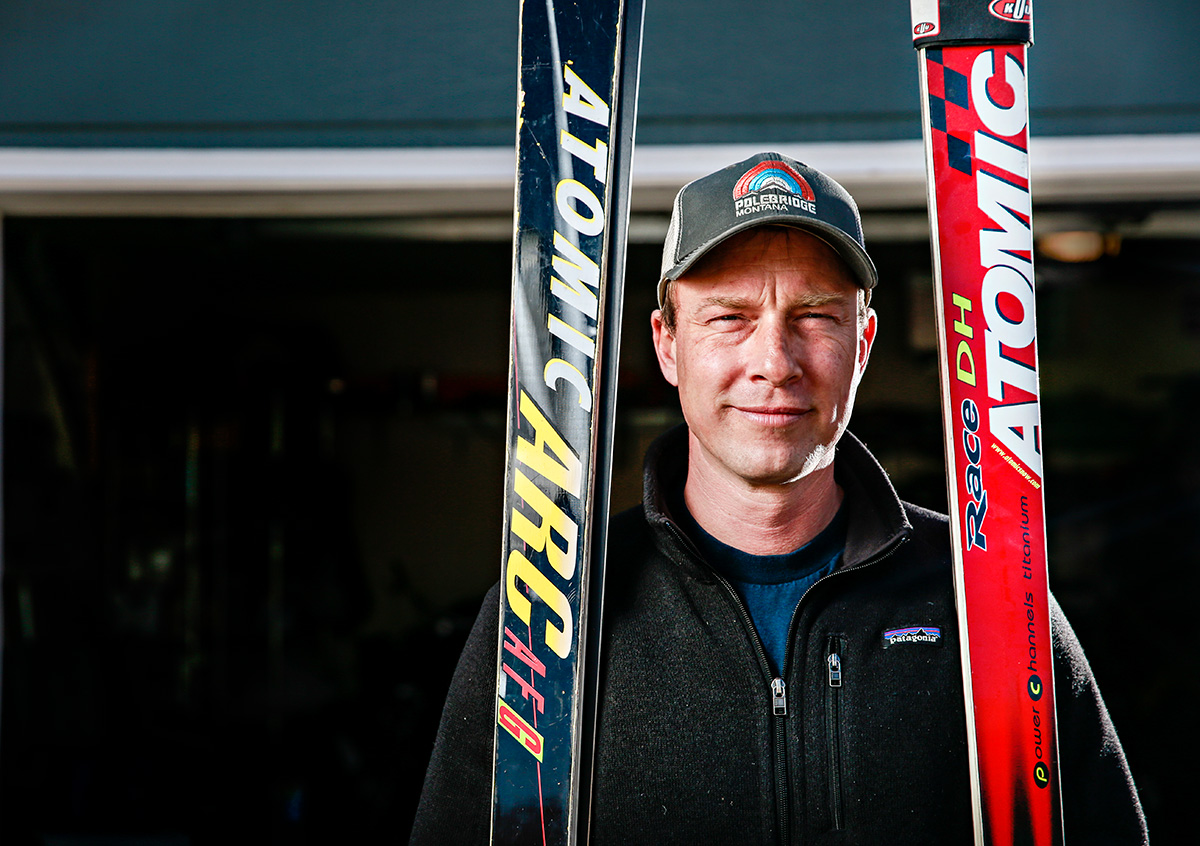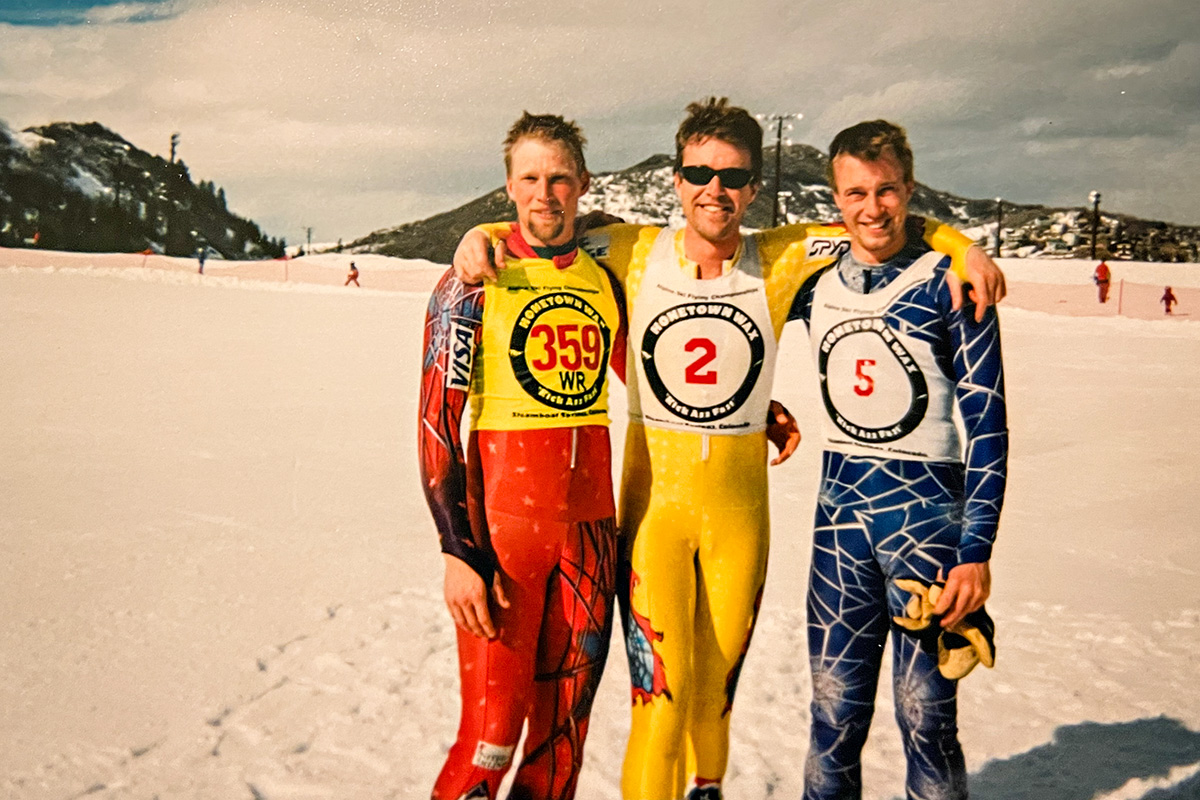The last thing Erik Wilson did from the top of the hill at Missoula’s Snowbowl ski area was check the wind.
He stared at the flags flapping above a knoll a few yards down the hill, made sure his skis were set and stepped into the chute.
Erik pushed down a flatter portion of hill and began to negotiate a left turn while cheers from onlookers swelled. He stayed on the high side of the tracks and angled toward the natural jumping table that served as his takeoff zone.
Moving at more than 40 miles per hour, as the crowd went silent, he launched off the jump.
Muscle memory took over in the air — skis in a V-formation, chin up, chest out, arms to the side with just a little rudder action to steer right and left.
One one-thousand.
From the air, Erik saw the red line marking 200 feet and thought, “I’m going all the way down there.”
Then doubt crept in. “Oh no.”
His body reacted, pulling back slightly and prematurely starting his descent.
Two one-thousand.
Mere heartbeats after taking off, Erik landed 184 feet down the hill with a bone-rattling, knee-knocking jolt.
He immediately banked left around the final turn of the course as women from the University of Montana rugby team ran out to mark his landing spot for the judges.
“I knew at that jump that I was clearing the field, because even though I pulled the chutes, I absolutely sailed past all the bomb holes,” Erik said. “That’s the main objective, is not landing in the holes where everyone else is landing.”
Even with the midair hesitation, Erik’s jump was the farthest of the 13 pro competitors assembled for the 2021 Snowbowl Cup Gelande Championships on Feb. 28. The distance, along with points for style, earned him the 48-pound traveling trophy for the third time and marked the 19th time since 1996 that his family name would be etched into the brass plaque of champions.

Gelande, short for the German word gelandesprung meaning “terrain jump,” is one of the more obscure disciplines in the wellspring of snow sports.
“I usually explain it two ways, depending on if someone’s a skier or not,” Erik, who lives in Kalispell, said. “If you’re not a skier, then I say, ‘You know the Olympics where they go off that huge jump and go really far with their skis in the V? It’s basically that.”
When talking to skiers, however, he gets into the details that set gelande alpine jumping apart from the Olympic discipline.
Gelande jumpers use the same jumps, but do so using alpine gear with heels clicked into their bindings.
While Nordic jumpers use special skis and suits meant to maximize their ability to float on the air and glide down a hill, gelande jumpers have much less control.
“We are more like an aerodynamic rock hurtling through the air,” Erik said. “It’s really just a controlled fall.”
Gelande jumping started in Alta, Utah in the early 1960s, and the sport grew until competitions began to pop up in the early 1970s at popular ski resorts across the west, such as Steamboat Springs, Crested Butte and Jackson Hole.
In 1974, the Snowbowl Cup was first held in Missoula and has grown into one of the sport’s most prominent competitions in the nation.
With only two exceptions when the competition was canceled due to inclement weather, the last weekend of February for decades has been dedicated to building up a natural jump on one of the main Snowbowl runs near the lodge and allowing skiers over the age of 18 to huck themselves off of it.
The Snowbowl jump is known among gelande jumps for its unique run. The course begins and ends with a curve, and rather than utilizing a specifically designed Nordic jump, Snowbowl uses its natural terrain for the jump, which competitors maintain year round.
Judges at the top of the hill grade each competitor on style points for takeoff and landing, and the Missoula Betterside Women’s Rugby Club has a long tradition of taking part as the official spotters who measure each jump.
The two-day competition’s air of silliness can sometimes overshadow the seriousness the top competitors bring to the hill. It helps that the competition pays out $8,000 to the winner of the pro division.
Erik has jumped on the same pair of 214-centimeter Atomic skis since he started competing at the Snowbowl Cup in 1998.
“These are my jump boards that I bought 20-some years ago for $150 — they have probably brought me $20,000,” Erik said. “So it was a pretty good investment, and they’ve literally flown me thousands and tens of thousands of feet.”

“You just have to take your common sense and set it aside, and commit to something that is really totally insane,” Erik said. “It takes a certain kind of person, I think, to do that.”
Erik is one of those certain kinds of people. So is his older brother, Rolf, and their oldest brother, Brent.
The Wilson brothers, Brent (51), Rolf (42) and Erik (41), grew up in Whitefish skiing on Big Mountain. When Rolf and Erik started skiing as toddlers, Brent was already well established as a ski racer, and the younger brothers began following in his footsteps.
The younger Wilsons raced until their preteen years before they began to delve into freeskiing, again following Brent. It was then that the Wilsons started to get the feel for jumping.
“Brent was the downhiller, but we were all technical skiers,” Rolf said. “On Big Mountain, there’s rollers everywhere and it’s such a high-speed mountain, it lent itself to all of us brothers to learn how to catch as much big air as humanly possible.”
When Rolf went to college in Missoula, where he was a member of the UM ski team, it was Brent who introduced him to the world of gelande.
“Brent handed me a pair of Blizzards and said, ‘Put these on, you’ve got to try this.’”
He tried it and was immediately hooked. He estimates he jumped 30 times on his first day. Shortly after, Brent indoctrinated Erik into the sport as well, through some sleight of hand.
“At the time you had to be 18 to jump, but I was only 16,” Erik said. “Brent handed me his downhill suit, his helmet, his goggles, his everything and told me to go jump.”
Erik jumped without a parental waiver, in the gear of the reigning Snowbowl Cup champion, and was swiftly identified and kicked off the hill.
“I remember watching the lineup of skiers and hearing them announce Brent was taking a run and thinking, ‘That’s not Brent,’” Rolf recalled. “Brent was standing right next to one of the officials when they announced his name and people were very confused.”
But Erik was hooked as well and returned to the competition as soon as he was eligible. At that point, the Wilson brothers were gaining a reputation. Brent won the competition in 1996 and again in 1998, kicking off a 14-year streak of Wilson champions and near-constant sibling rivalry.
“Brent’s the powerhouse; he’s got legs like tree trunks. Rolf is the pretty flier — he always just skis well and looks good — and then I’m somewhere in between,” Erik said. “Brent did well right away and could just muscle out these long jumps and then Rolf would just get off the jump well and fly.”
While it took Erik several years to crack the top of the results list — his first win was in 2006 — Rolf took to it pretty quickly.
“He’s our flier, and I mean that dude flies so well,” Erik said.

Among the brothers, Rolf has the family distance record, which happens to also be the world record for alpine jumping at a nearly unfathomable 374 feet down in Steamboat Springs.
For context, that’s the equivalent of jumping through one football goalpost, across the entire field and through the opposing goalpost, plus adding a few extra yards, all at around 65 miles per hour.
Due to the family stranglehold on the top podium spot at Snowbowl, however, the rivalry was most pronounced in Missoula.
“We always had a lot of trash talking between us and would play pranks on competition days,” Erik said. “We’d hide skis or leave screwdrivers near the jumping skis to force someone to look for sabotage.”
“But most of the time, especially at the jump, we coach each other and we’re very supportive of each other,” Erik continued. “We were team Wilson for sure.”
Officials and fans of the Snowbowl Cup affectionately refer to the trio as the “flying Wilson Brothers,” or the “Wilson Air Force,” a uniquely talented family within the already close-knit community of gelande jumpers.
“They all have competency and a low fear factor, which is necessary to gravitate towards this sport,” said longtime Snowbowl Cup official and competitor John Yobst. “It’s cool that they all have those attributes and they all did it so freaking well.”

Rolf can vividly recall the first time Erik beat him at the Snowbowl competition, back in 2006.
“It was the last jump of the last round and we’re yammering back and forth egging each other on, and I had the lead,” he said. “I told him he was going to have to jump 204 feet and break the hill record to beat me.”
As soon as Rolf saw his brother take off, he knew it was going to happen. Erik landed a 205-foot jump, which remains the hill record.
“Yeah, that was great, until Rolf decided I couldn’t have anything in this sport for my own and tied the record a few years later,” Erik said with a laugh. “But I still think I went a few inches further.”
The trio last competed together in Utah back in 2009, and for the last few years, Erik has been the only representative of the Wilson clan at the Snowbowl Cup. Knee problems stopped Brent jumping first and Rolf claims to have retired a few years back after moving to Seattle.
“I’m retired with a desire to return,” he said. “It’s really my favorite thing in the whole world, and I’m so proud of Erik for competing with those guys and keeping it in the family.”
Erik doesn’t think he’s ready to stop jumping yet. For one, as the last Wilson, he’s not ready to end the tradition.
“I would hate to hear, ‘There’s no more Wilson at the jump, so it’s anyone’s ballgame,’” he said.
But for another, it’s just too fun, between the camaraderie among jumpers and the feeling of flying, if only for a few seconds.
“When you just really dig one, and you know you’re going to the bottom of the hill, there’s a moment in the air when your mind says no,” Erik said. “But when you push that thought aside, lay on the air and land past that red line, then you just feel like a badass.”

